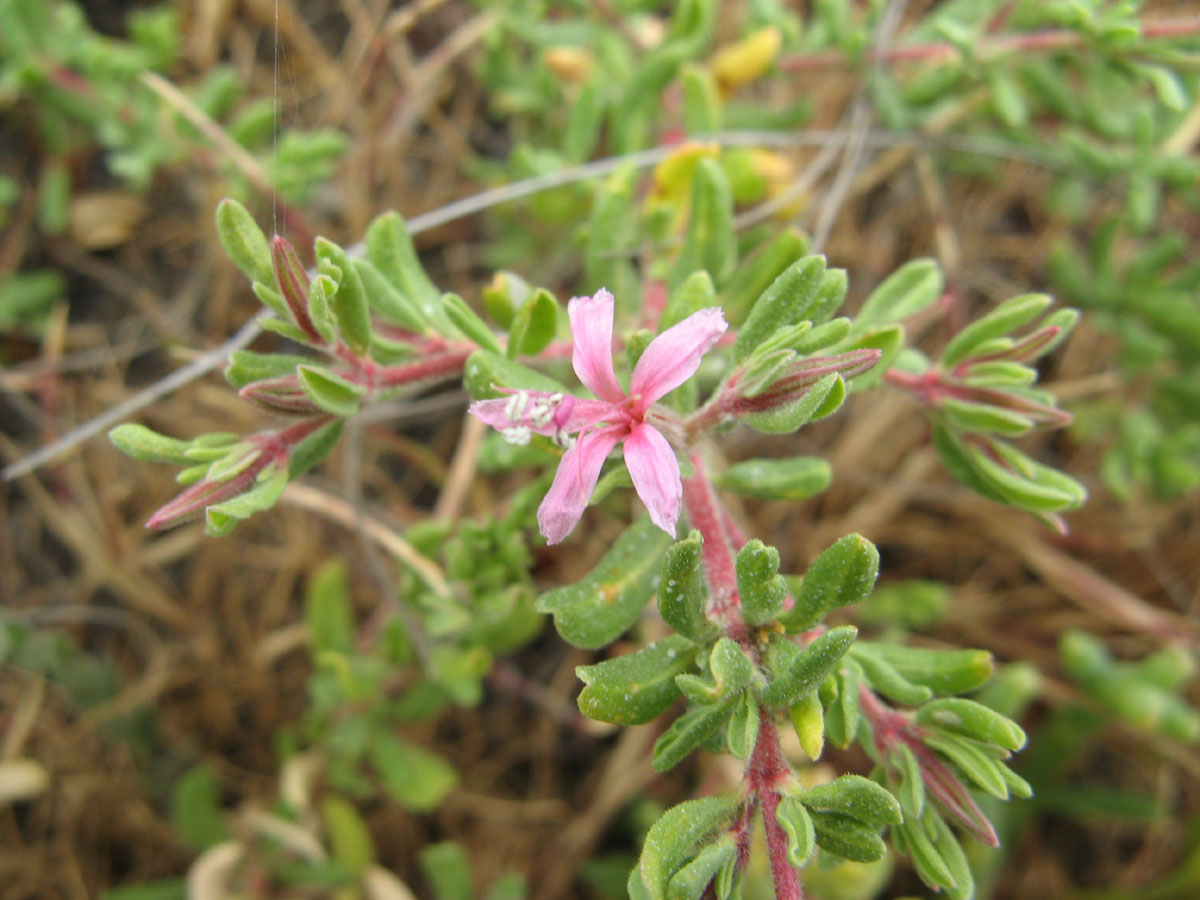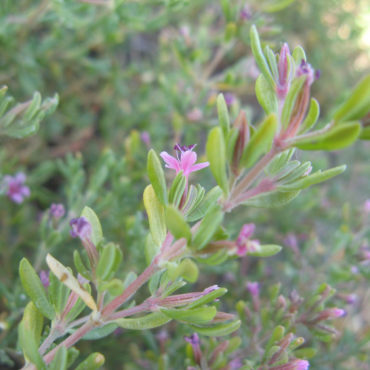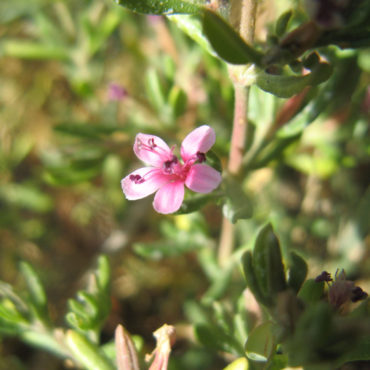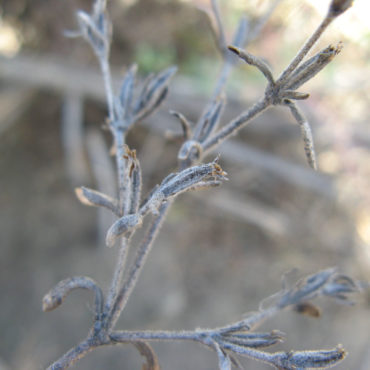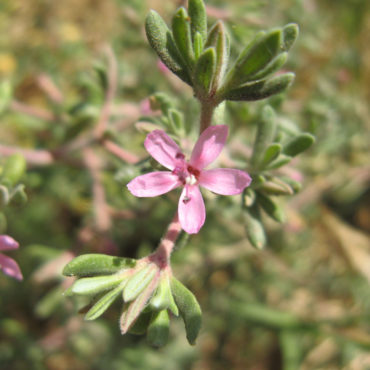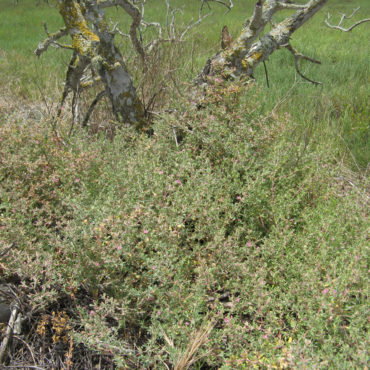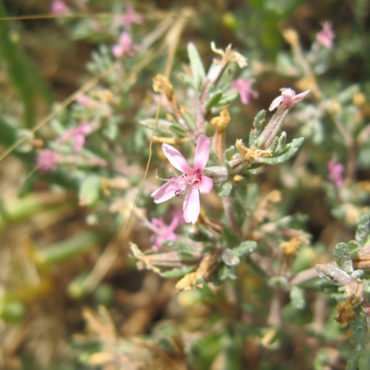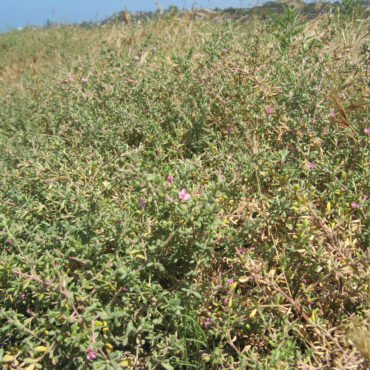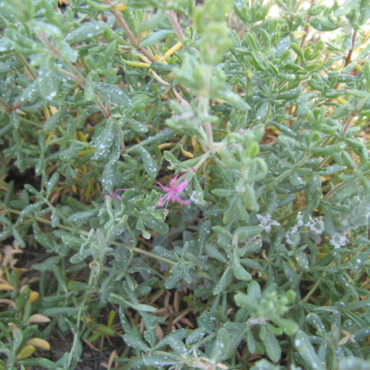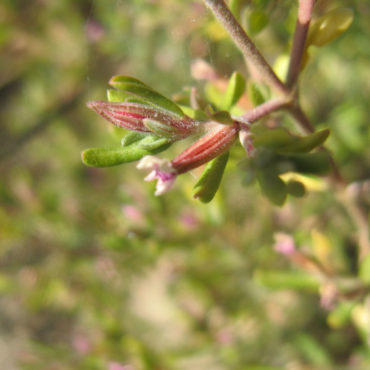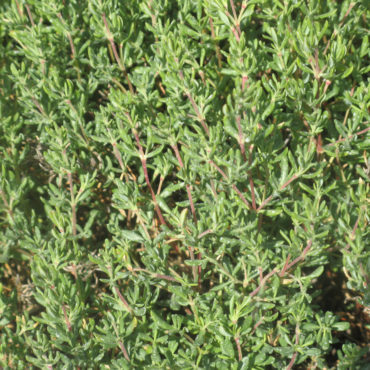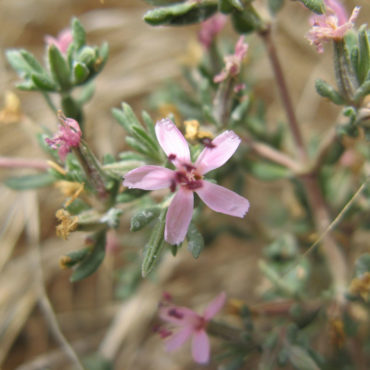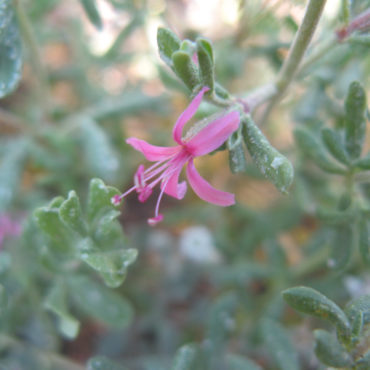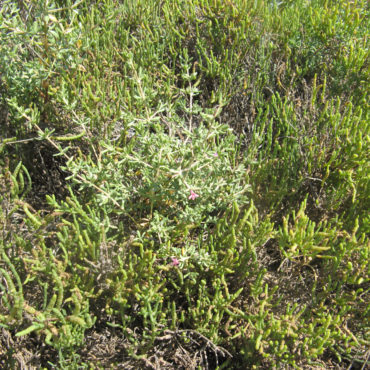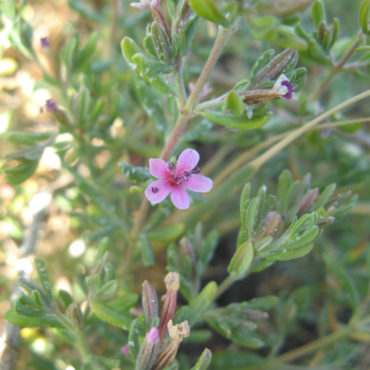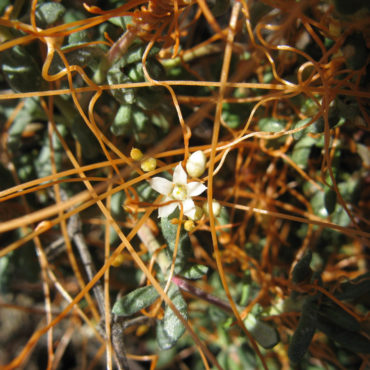Alkali heath (Frankenia salina) is a low, woody perennial that grows in the salt marsh, forming clumps in the carpet of pickleweed. The small, scattered pink flowers are born on reddish stems. Close up, they are quite attractive but from a distance they vanish.
All salt-marsh plants can “drink” sea water because they have special adaptations to avoid being damaged by the salt. Alkali heath eliminates the toxic salt by excreting concentrated salt water through specialized glands. As the sun evaporates the water, crystals of salt are left on the foliage.

